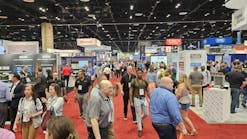Global HVACR Market Shaped by Climate Change, Extreme Weather Events
Condensing boilers, combi boilers and heat pumps are all heating technologies that will continue to see steady growth as the global HVACR community works on what will replace gas boilers in the face of climate change and its effect on weather, noted Socrates Christidis of BSRIA, a UK-based nonprofit that aims to make buildings better. He and three of his colleagues spoke to AHR Expo attendees Feb. 3 in Orlando, FL, about global HVACR trends.
Christidis noted that most of the growth in boilers will come from replacement, not new construction. The United States has a large number of noncondensing boilers that are need of, or will be in need of, replacement. The U.S. heat pump market was 4 million units in 2019; most are sold in new construction.
“The main challenge is the energy costs of electricity vs. gas,” he noted. “U.S. electricity prices will increase in the next five years. Heat pump sales will grow strongly.”
Sales of wireless access points for connected devices in commercial buildings will increase 19 percent; sales building security products will rise to 23 million units by 2025, said BSRIA’s Lone Hanson.
“As technology keeps improving, equipment and software may be replaced, but not the network,” she said. Bluetooth technology centers in buildings and monitor HVAC systems as well as building automation systems.
Smart home technology is driving innovation in the commercial area, Hansen said.
Turning to air conditioning, growth is shown in chillers, ductless split systems, low global warming potential refrigeration and VRF technology, explained BSRIA’s Saziye Dickson. Mini VRF tech used in residential and light commercial applications will see double-digit growth in the United Sates, she said. “The United States is moving toward ductless options,” she added.
Lastly, BSRIA’s Anette Holly noted that wellness real estate – “healthy buildings” – is growing 6 percent annually, with a large market in the United States. Globally, it could reach $180 billion by 2022.











